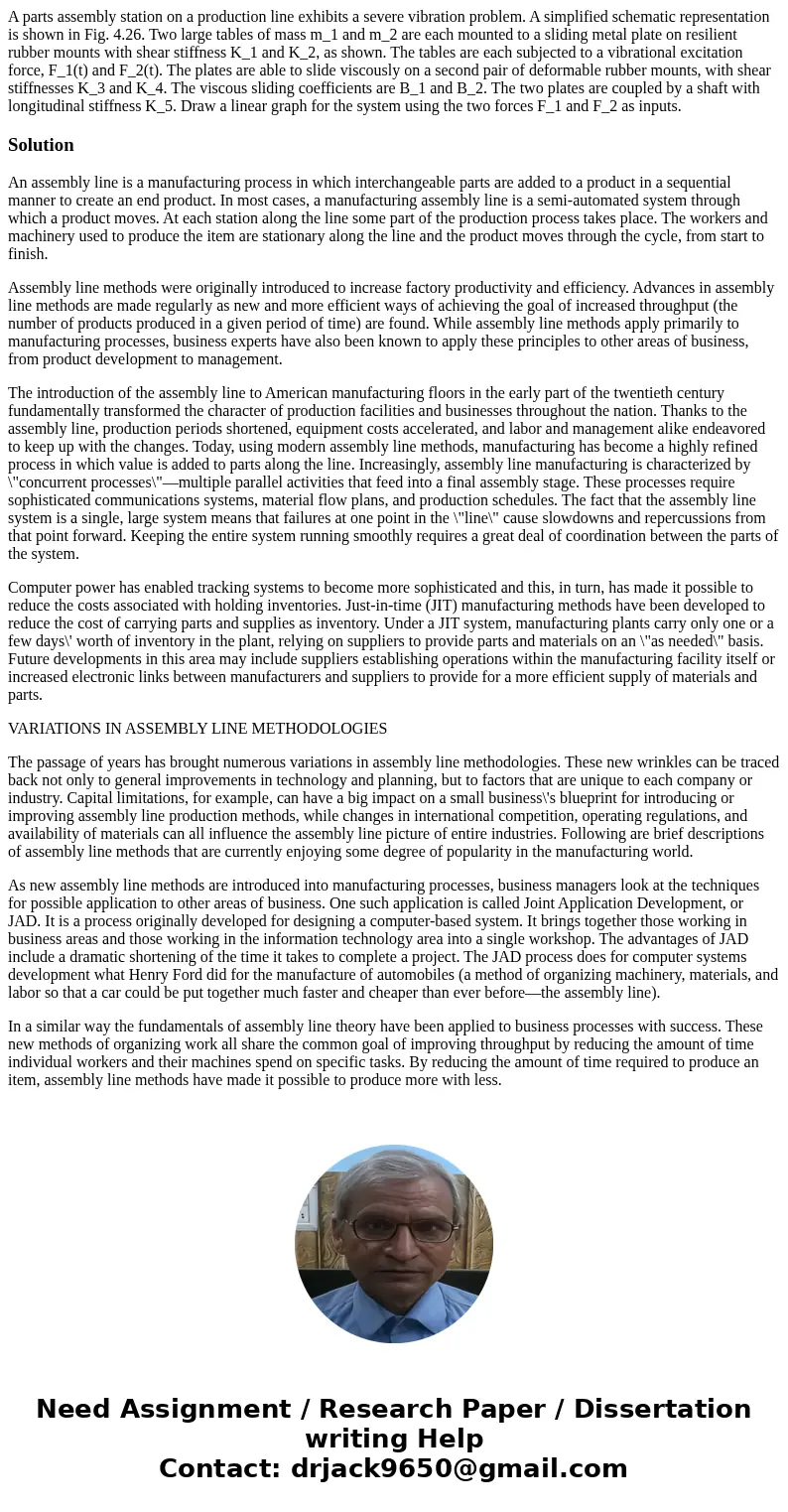A parts assembly station on a production line exhibits a sev
Solution
An assembly line is a manufacturing process in which interchangeable parts are added to a product in a sequential manner to create an end product. In most cases, a manufacturing assembly line is a semi-automated system through which a product moves. At each station along the line some part of the production process takes place. The workers and machinery used to produce the item are stationary along the line and the product moves through the cycle, from start to finish.
Assembly line methods were originally introduced to increase factory productivity and efficiency. Advances in assembly line methods are made regularly as new and more efficient ways of achieving the goal of increased throughput (the number of products produced in a given period of time) are found. While assembly line methods apply primarily to manufacturing processes, business experts have also been known to apply these principles to other areas of business, from product development to management.
The introduction of the assembly line to American manufacturing floors in the early part of the twentieth century fundamentally transformed the character of production facilities and businesses throughout the nation. Thanks to the assembly line, production periods shortened, equipment costs accelerated, and labor and management alike endeavored to keep up with the changes. Today, using modern assembly line methods, manufacturing has become a highly refined process in which value is added to parts along the line. Increasingly, assembly line manufacturing is characterized by \"concurrent processes\"—multiple parallel activities that feed into a final assembly stage. These processes require sophisticated communications systems, material flow plans, and production schedules. The fact that the assembly line system is a single, large system means that failures at one point in the \"line\" cause slowdowns and repercussions from that point forward. Keeping the entire system running smoothly requires a great deal of coordination between the parts of the system.
Computer power has enabled tracking systems to become more sophisticated and this, in turn, has made it possible to reduce the costs associated with holding inventories. Just-in-time (JIT) manufacturing methods have been developed to reduce the cost of carrying parts and supplies as inventory. Under a JIT system, manufacturing plants carry only one or a few days\' worth of inventory in the plant, relying on suppliers to provide parts and materials on an \"as needed\" basis. Future developments in this area may include suppliers establishing operations within the manufacturing facility itself or increased electronic links between manufacturers and suppliers to provide for a more efficient supply of materials and parts.
VARIATIONS IN ASSEMBLY LINE METHODOLOGIES
The passage of years has brought numerous variations in assembly line methodologies. These new wrinkles can be traced back not only to general improvements in technology and planning, but to factors that are unique to each company or industry. Capital limitations, for example, can have a big impact on a small business\'s blueprint for introducing or improving assembly line production methods, while changes in international competition, operating regulations, and availability of materials can all influence the assembly line picture of entire industries. Following are brief descriptions of assembly line methods that are currently enjoying some degree of popularity in the manufacturing world.
As new assembly line methods are introduced into manufacturing processes, business managers look at the techniques for possible application to other areas of business. One such application is called Joint Application Development, or JAD. It is a process originally developed for designing a computer-based system. It brings together those working in business areas and those working in the information technology area into a single workshop. The advantages of JAD include a dramatic shortening of the time it takes to complete a project. The JAD process does for computer systems development what Henry Ford did for the manufacture of automobiles (a method of organizing machinery, materials, and labor so that a car could be put together much faster and cheaper than ever before—the assembly line).
In a similar way the fundamentals of assembly line theory have been applied to business processes with success. These new methods of organizing work all share the common goal of improving throughput by reducing the amount of time individual workers and their machines spend on specific tasks. By reducing the amount of time required to produce an item, assembly line methods have made it possible to produce more with less.

 Homework Sourse
Homework Sourse